BMW 7 Series
BMW 7 Series
| BMW 7 Series | |
|---|---|
 | |
| Overview | |
| Manufacturer | BMW |
| Production | 1977–present |
| Body and chassis | |
| Class | Full-size luxury car (F) |
| Body style | 4-door sedan |
| Layout | FR layout, F4 layout (xDrive models) |
| Chronology | |
| Predecessor | BMW New Six |
The 7 Series is BMW's flagship car and is only available as a sedan (including long wheelbase and limousine models). It traditionally introduces technologies and exterior design themes before they trickle down to other models in BMW's lineup.[1]
The first generation 7 Series was powered by straight-6 petrol engines, and following generations have been powered by inline-4, straight-6, V8 and V12 engines with both natural aspiration and turbocharging. Since 1995, diesel engines have been included in the 7 Series range.
Unlike the 3 Series and 5 Series sedans, BMW has not produced an M model for the 7 Series (ie an "M7"). However, in 2014 an "M Performance" option became available for the 7 Series.
First generation (E23; 1977–1986)
The E23 is the first generation 7 Series, and was produced from 1977 to 1987. It was built in a 4-door sedan body style with 6-cylinder engines, to replace the E3 sedans. From 1983 to 1986, a turbocharged 6-cylinder engine was available.The E23 introduced many electronic features for the first time in a BMW, including an on-board computer, service interval indicator, a "check control panel" (warning lights to indicate system faults to the driver), a dictaphone and complex climate control systems. It was also the first BMW to offer an anti-lock braking system (ABS), a driver's airbag and double-link front suspension.
Second generation (E32; 1986–1994)
The E32 is the second generation of 7 Series, which was produced from 1986 to 1994. It was initially available with a straight-six or V12 engine. In 1992, V8 engines became available.The E32 introduced the following features for the first time in a BMW: Electronic Damper Control,[2] V12 and V8 engines, double glazing, the CAN bus electronic protocol,[3] Xenon headlamps,[4] traction control[5] and dual-zone climate control.[6] The E32 750i was the first car adhering to BMW's self-imposed speed limit of 250 km/h (155 mph).[7] The 'iL' models were the first time that a long-wheelbase option was offered by BMW.
Third generation (E38; 1994–2001)
The E38 is the third generation of the 7 Series, which was produced from 1994 to 2001. The model range consisted of standard length and long wheelbase ("iL" models) sedans.The petrol engines available consisted of straight-six, V8 and V12 engines. The E38 was the first 7 Series to be available with a diesel engine; initially a turbo straight-six, which was joined by a turbo V8 in 1998.
The E38 was the first car available with curtain airbags. It was also the first European car to offer satellite navigation[8] and the first BMW to offer an in-built television.
Fourth generation (E65/E66/E67/E68; 2002–2008)
The E65/E66/E67/E68 is the fourth generation 7 Series, which was produced from 2001 to 2008. The model range consisted of standard length and long wheelbase ("Li" models) sedans.The E65/E66/E67/E68 was the first BMW to include iDrive, "flame-surfacing" exterior styling, active anti-roll bars, a 6-speed automatic transmission, an electronic Smart Key (dispensing with the traditional metallic key) and night vision. The 760i model was the world's first production V12 engine to use direct injection.[9][10]
Fifth generation (F01/F02/F03/F04; 2008–2015)
The F01/F02/F03/F04 is the fifth-generation 7 Series, which was produced from 2008 to 2015. The model range consisted of standard length and long wheelbase ("Li" models) sedans.The F01 was the first BMW to be available with a hybrid drivetrain ("ActiveHybrid 7"), an 8-speed automatic transmission and a turbocharged V12 engine. It was also the first 7 Series to be available with a turbocharged petrol engine and all-wheel drive (xDrive).
Sixth generation (G11/G12; 2015–present)
The G11/G12 is the sixth generation of 7 Series, which has been in production since 2015. It was revealed on June 10, 2015 at BMW's headquarters in Munich.[11] An official public reveal took place at the 2015 International Motor Show Germany.G11 is the codename for the short-wheelbase model, the extended wheelbase model is codenamed G12 and designated with an additional L letter.
The G11/G12 is the first car lineup of BMW Group to be based on the modular OKL platform (Oberklasse, German for luxury class).[12] The OKL platform adopts technology first introduced in BMW i models, namely the introduction of carbon-fiber-reinforced polymer as structural chassis components.
As part of BMW's strategy of introducing plug-in hybrid variants for all future car models,[13] both, the short and long-wheelbase models will be available with hybrid powertrains under the designations 740e and 740Le in 2016.[14]


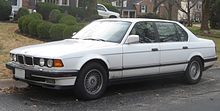



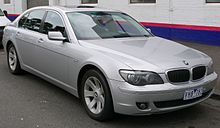

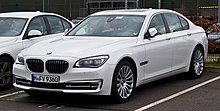
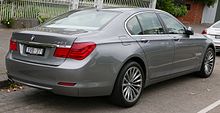

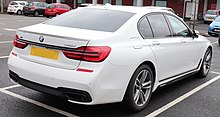


Comments
Post a Comment